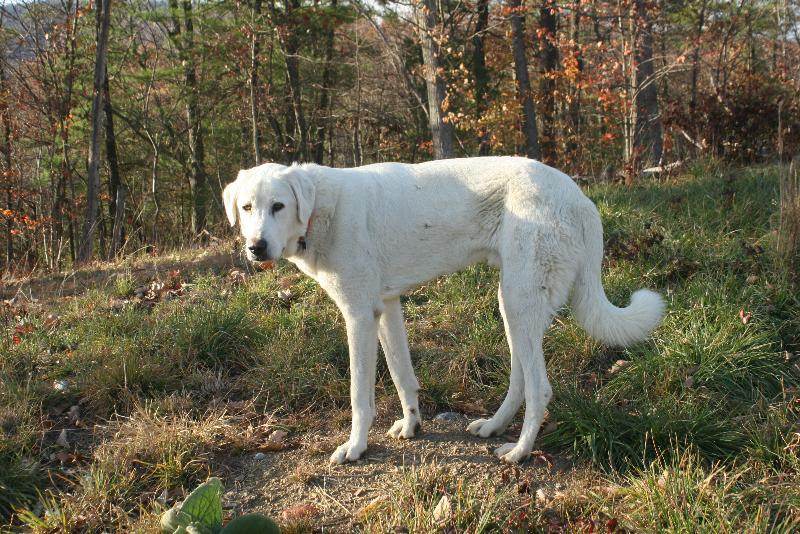In my opinion, it's not good that you have already had to back down from one of the dogs, but it sounds like you did it in the best way you could. That being said, being safe is very important, and I don't think this will be a long term problem. We have 5 LGDs. Mostly Great Pyrenees and a few crosses. All new workers on the farm are told not to approach the dogs without someone else who can confirm that they themselves are comfortable with that particular dog. (Each dog is contained with different groups of poultry and not free ranging on the farm) When we introduce new people to the dogs we always have those people feed them, which we do twice a day,(The people with the food are the good guys) and
always have and experienced person with them. <~ read that as "respected dominant human". We never hit the dogs but all bad behavior (ie. growling/barking at farm employees, chasing chickens, eating chickens dead or alive) is met with a stern "No! Bad dog!" and we approach the dog and make them lay down. The people receive training as well. They are reminded that how you feel and act around animals affects them greatly. We tell them to stay calm and remain aware of the dogs at first but essentially just carry on with chores. If the dog approaches them we remind them to greet the dog (They all know there names) and allow themselves to be sniffed and even pet the dogs briefly to make a positive interaction. I feel this all works well within just a few days, depending on how often the person and the individual dog see each other. (We have a lot of part time help so this can take a few weeks) Remember that every dog is different. I personally had to have a few standoffs with our largest male when I first started the job. It was a little nerve racking but we worked it out. I made him lay down every time I fed him for quite a while. I wasn't comfortable reaching down to place his bowl on the ground if he was standing next to me.(Food guy = Good guy) Mostly our standoffs were a result of me having to correct bad behavior. Things like him guarding a single egg and chasing chickens. Another example is with our female. For a short while even after introduction, I tell new employees to try not to walk between her and myself while we are in the enclosure. I'm not sure whether she tries to protect me or just sees the opportunity to act up without me near by. But these are just examples of learning about individual dogs.
For yourself I recommend this.
Voice your concerns and don't let anyone brush them off as you over reacting.
Have the owner/dominant human with you at least once a day for feeding in order to correct bad behavior towards you.
You feed each dog.
Talk to each dog positively. Use their names. Do make eye contact.
Let them check you out/sniff you each day. Maybe give a quick pet on the head and then carry on with your work.
In a short while be ready to correct bad behavior, even towards you. They should react appropriately.
I hope this helps. If I think of anything else I will edit. Good luck. Don't get eaten










